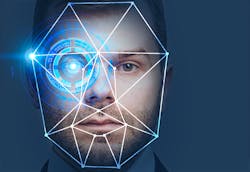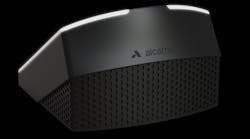With touchless access control and anti-tailgating requirements emerging as critical risk mitigation elements, facial recognition software expanded its footprint into applications that could function as both a health and a security option. SecurityInfoWatch.com had an opportunity to speak with Vince Gaydarzhiev, who is the President and CPO of Alcatraz AI, about how an autonomous access control platform can replace badging and biometric technologies at the enterprise level.
SIW: End-users have found themselves in a paradigm shift as it relates to access control technologies since the outbreak of COVID-19 last February. What were your clients and systems integrator partners telling you then needed to provide solutions to the growing pandemic health and safety mandates and how did you address these challenges?
Vince Gaydarzhiev: With COVID-19 cases decreasing and vaccination numbers hitting new milestones, our clients and system integrators want contactless identity verification technology to safely bring back their workers to physical workspaces. One of the challenges with bringing workers back into workspaces is controlling access, including creating controlled or separate entrances and exits, monitoring who has access into facilities and when, and even dividing work areas into zones to limit large numbers of people congregating. Alcatraz AI offers the Alcatraz AI Rock solution that provides effective access control for the new norm world. The solution employs a multi-sensor technology and a touchless authentication feature that creates fewer touchpoints when entering a controlled space by using 3D facial authentication for scalable accuracy and security. Provides a long scanning range and large field of view feature that can effectively detect tailgating and send real-time alerts if an unauthorized person is detected. Also, it provides facemask verification, with technology that can check whether an employee is wearing a mask as they authenticate.
SIW: What have been the most dynamic technology trends your product team has seen playing out this year and what long-term changes to security systems in general and access control, in particular, have legs and are long-term solutions?
Gaydarzhiev: Anti tailgating checks and unauthorized entry into enterprise buildings have always been solved with additional guards or turnstiles, which is not scalable for most corporations. With the trend to go back to the office in the next few months, companies are looking for solutions to make sure all people getting in are accounted for.
SIW: Using an advanced AI platform allows for a more robust access control system and one that certainly embraces all the parameters of a secured network and multi-authentication options. Discuss some complementary technologies that AI permits to integrate for high-security access control solutions and some of the best practices for implementing them.
Gaydarzhiev: Data and integration are key. When deploying a visual-based, passive access control solution like frictionless secure face recognition, companies can use the data to plug into other products they have already deployed for a more comprehensive analytics output, that has value not only in physical security but operations, HR, even payroll, merging employee check-in, tailgating sensing, occupancy trends and more.
SIW: There seems to be some confusion regarding the differences between facial authentication and facial recognition. Can you provide an overview that explains how they are different and where they might be used for access control applications?
Gaydarzhiev: Although both technologies use biometric software systems to identify individuals, they employ distinct processes and are applied for different purposes.The term Face Recognition has come under great scrutiny in the past several years. There have been several companies that have leveraged the technology in ways that many people believe violate their privacy rights. These companies surreptitiously collected biometric data from users that were, in some cases, unaware that the data was being collected. This data has been compiled into large databases that were then shared, or even sold to third-party entities for use in such applications as covert surveillance or to send targeted marketing ads. This non-cooperative use of the technology is what many people associate with when they are thinking about or discussing face recognition. Starting with the Illinois Biometric Information Privacy Act (BIPA) and followed by GDPR in the EU, CCPA in California, and others, legislation has been created to limit the use of non-cooperative face recognition in these types of applications to protect the privacy of citizens. This technology measures and matches the unique characteristics of an existing database.
In contrast to non-cooperative face recognition, face authentication technology is used to verify the identity of an individual that is actively interacting with the system. Face authentication can be implemented using different techniques. If you have an Apple iPhone X or later model, you are familiar with one of these face authentication techniques known as one-to-one matching (aka face verification). This method provides a simple “Yes or No” answer to the question of “Is this or is this not the right person trying to unlock me.
Systems such as the Alcatraz AI Rock take advantage of a technique known as one-to-few matching. This method leverages artificial intelligence to verify the identity of the person interacting with the system. All system users are aware that they are using a biometric system and have provided consent before enrolling or being authenticated.
SIW: As you prepare for this ISC West event in 2021, what solutions is Alcatraz AI showcasing that might be new or simply a must-see for users and integrators?
Gaydarzhiev: Alcatraz AI will showcase the Rock, which provides facial authentication access control solutions that offer multi-factor identification, tailgating detection and notification, and ONVIF video streaming at ISC West 2021.
Alcatraz AI offers the Alcatraz AI Rock solution that provides safe and secure access control:
- Multi-Factor Authentication - Combining two or more authentication factors adds a layer of protection to a restricted area in a zero-trust environment.
- Frictionless Access - Multi-sensor technology and a contactless authentication feature that creates fewer touchpoints when entering a controlled space by using 3D facial authentication.
- Tailgating detection- A long scanning range and large field of view feature that can effectively detect tailgating and send real-time alerts if an unauthorized person enters and sends real-time notifications to ACS/VMS.
- Video at the Door - The Alcatraz Rock can function as an ONVIF camera, and the video stream can be added to any VMS - giving security teams a unique door-level perspective of who is accessing an area.






